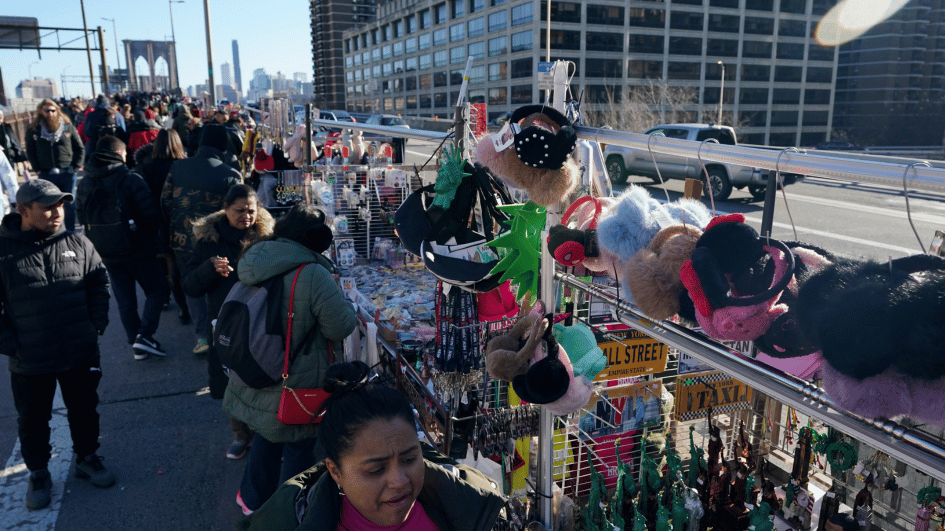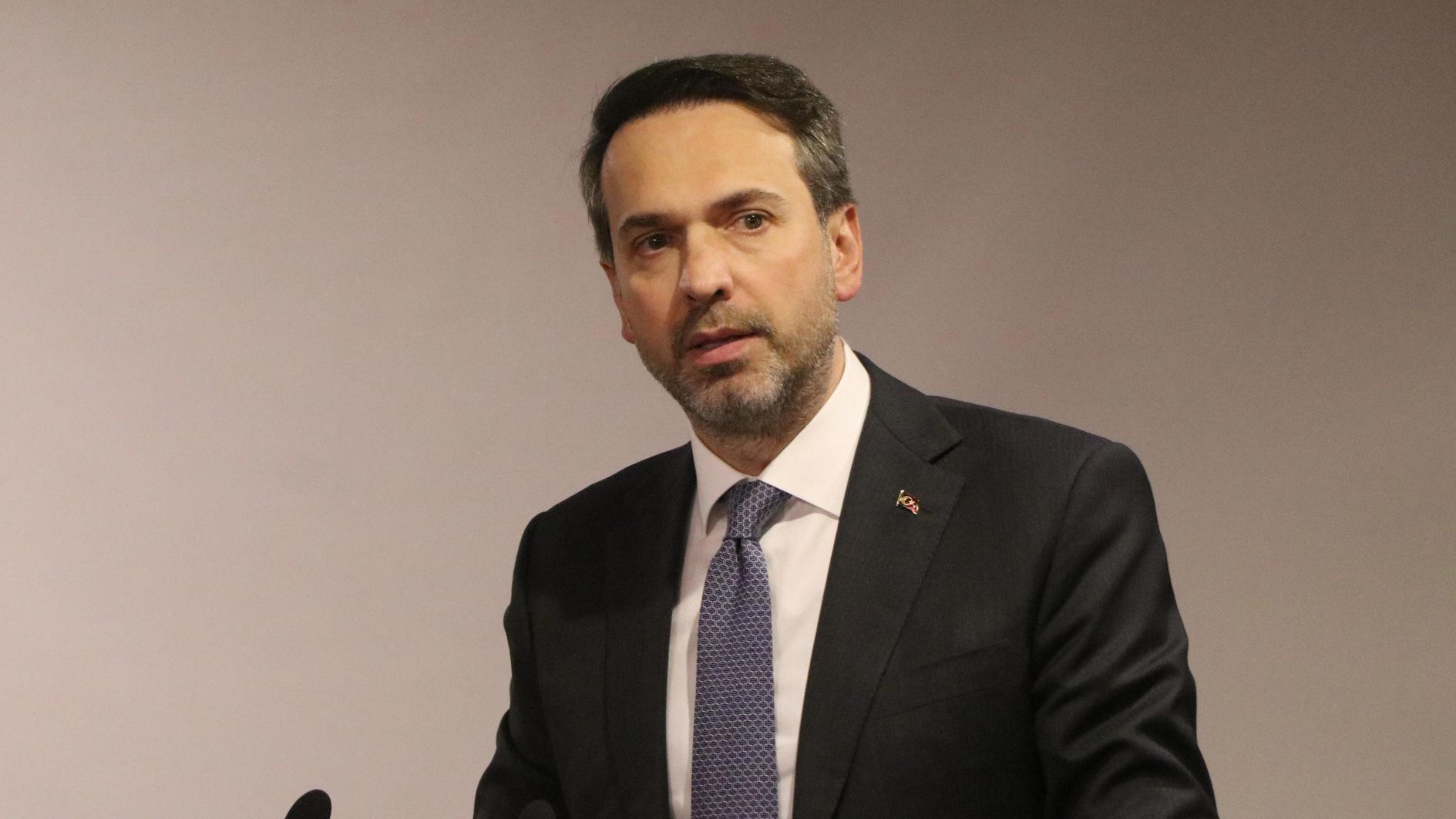Souvenir sellers flood Brooklyn Bridge
NEW YORK

Visitors to New York City hoping to take home a souvenir from the Brooklyn Bridge will now have to settle for a photograph, as vendors are about to be banned from the iconic span.
The new rule, which went into effect yesterday, aims to ease overcrowding on the bridge’s heavily trafficked pedestrian walkway, where dozens of trinket sellers currently compete for space with tourists and city commuters.
As crowds flocked to the bridge over the holiday season, the situation turned dangerous, according to New York City Mayor Eric Adams. He pointed to videos that showed pedestrians leaping from the elevated walkway onto a bike lane several feet below in order to bypass a human traffic jam.
“It’s not only a sanitary issue, it is a public safety issue,” Adams said on Jan. 2. “People would’ve trampled over each other. We need order in this city. That is one of our major landmarks.”
The new rules will apply to all of the city's bridges - though none have close to as many vendors as the 140-year-old Brooklyn Bridge, which is often lined with tables offering phone cases, knock-off Yankees caps, novelty license plates and more.
Those who sell items on the bridge acknowledge that vendors have proliferated in recent years, driven by relaxed enforcement during the coronavirus pandemic and the availability of low-priced merchandise. A decision two years ago to relocate cyclists to a lane of the roadway also freed up space for stalls.
In the middle span of the bridge, entrepreneurs have now set up nearly a dozen rotating selfie platforms where tourists can pay to take panoramic photos.
MD Rahman, who has sold hot dogs and pretzels out of a cart on the bridge for 15 years, said he understands the need to crack down on the illicit vendors. But he criticized the city’s plan as overly broad, since it also applies to veteran sellers, like himself, who hold mobile vending licenses.
“The problem is the illegal and unlicensed people selling things up there,” Rahman said, pointing to the newer group of vendors in the middle of the bridge. “To punish everyone, it’s crazy. I don’t know what is going to happen to my family now.”
In recent days, police officers have posted flyers in multiple languages across the bridge, telling vendors they will have to leave. But some had doubts about whether the city would actually follow through on the plan.
“Maybe I come back in a few weeks,” said Qiu Lan Liu, a vendor selling hats and T-shirts, many of them featuring the New York Police Department's insignia, NYPD. “I’ll see what other people do.”
As news spread of the coming ban, some tourists said they were taking advantage of the low-priced souvenirs while they were still available. Ana Souza, an Oklahoma resident, proudly held an “I Love New York” tote she'd found for just $10, a fraction of the price she’d seen at brick-and-mortar shops.
Jenny Acuchi was visiting New York from Oakland, California. “It’s a little crowded, but not as much as I expected,” she said. “The thing that makes it crowded is that everyone is taking photos.”
Among the supporters of the new rules were some disability rights advocates, who said the ban would immediately improve access for wheelchair users. In a statement, the city's transportation chief Ydanis Rodriguez celebrated the improvements to an attraction he dubbed “America’s Eiffel Tower.”
Rashawn Prince, who uses the bridge to sells copies of his self-published book, “How to Roll a Blunt for Dummies!” said he was unmoved by the comparison.
“I’ve been to the Eiffel Tower,” Prince said. “There’s vendors there, too.”
















